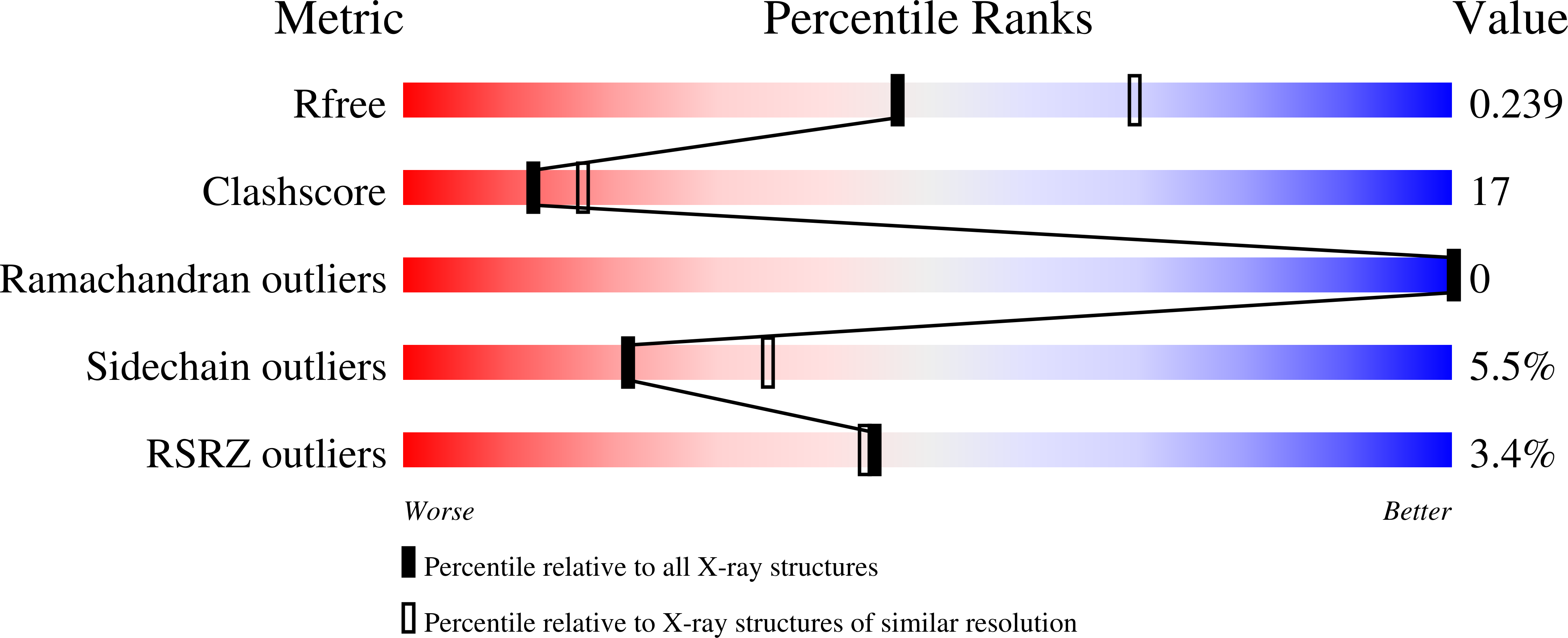Prediction and assignment of function for a divergent N-succinyl amino acid racemase.
Song, L., Kalyanaraman, C., Fedorov, A.A., Fedorov, E.V., Glasner, M.E., Brown, S., Imker, H.J., Babbitt, P.C., Almo, S.C., Jacobson, M.P., Gerlt, J.A.(2007) Nat Chem Biol 3: 486-491
- PubMed: 17603539
- DOI: https://doi.org/10.1038/nchembio.2007.11
- Primary Citation of Related Structures:
2P88, 2P8B, 2P8C - PubMed Abstract:
The protein databases contain many proteins with unknown function. A computational approach for predicting ligand specificity that requires only the sequence of the unknown protein would be valuable for directing experiment-based assignment of function. We focused on a family of unknown proteins in the mechanistically diverse enolase superfamily and used two approaches to assign function: (i) enzymatic assays using libraries of potential substrates, and (ii) in silico docking of the same libraries using a homology model based on the most similar (35% sequence identity) characterized protein. The results matched closely; an experimentally determined structure confirmed the predicted structure of the substrate-liganded complex. We assigned the N-succinyl arginine/lysine racemase function to the family, correcting the annotation (L-Ala-D/L-Glu epimerase) based on the function of the most similar characterized homolog. These studies establish that ligand docking to a homology model can facilitate functional assignment of unknown proteins by restricting the identities of the possible substrates that must be experimentally tested.
Organizational Affiliation:
Department of Biochemistry, University of Illinois at Urbana-Champaign, 600 South Mathews Avenue, Urbana, Illinois 61801, USA.















